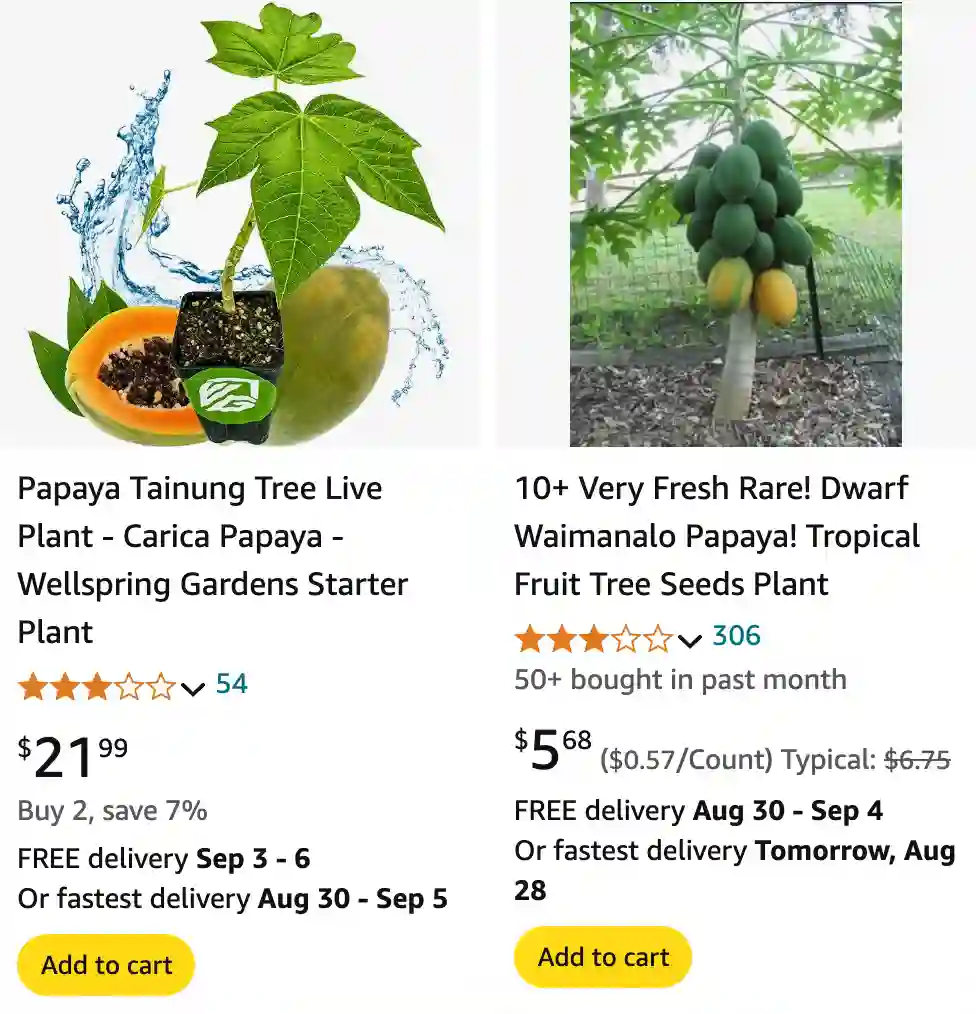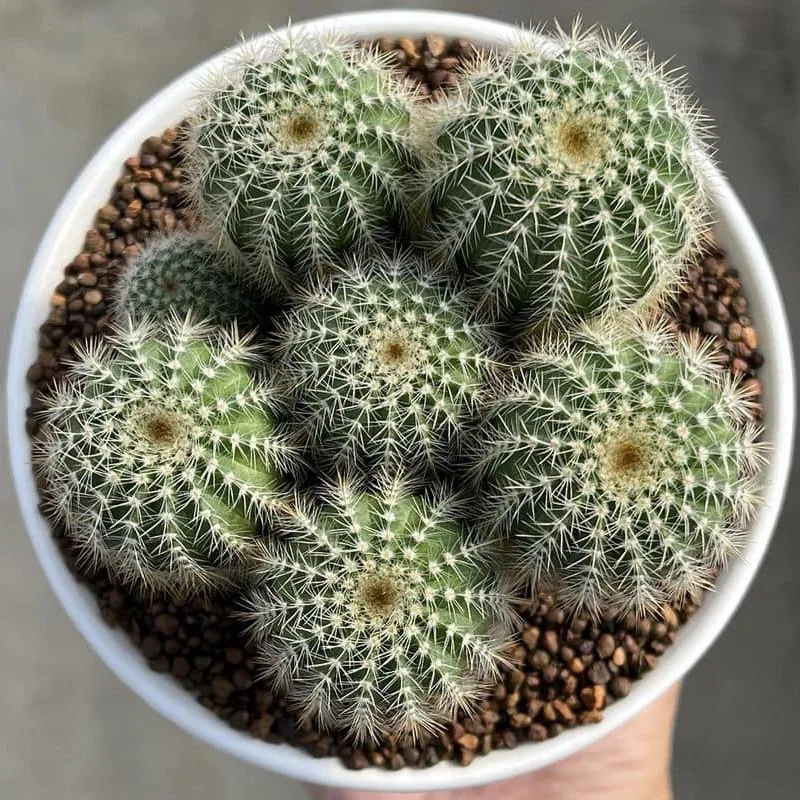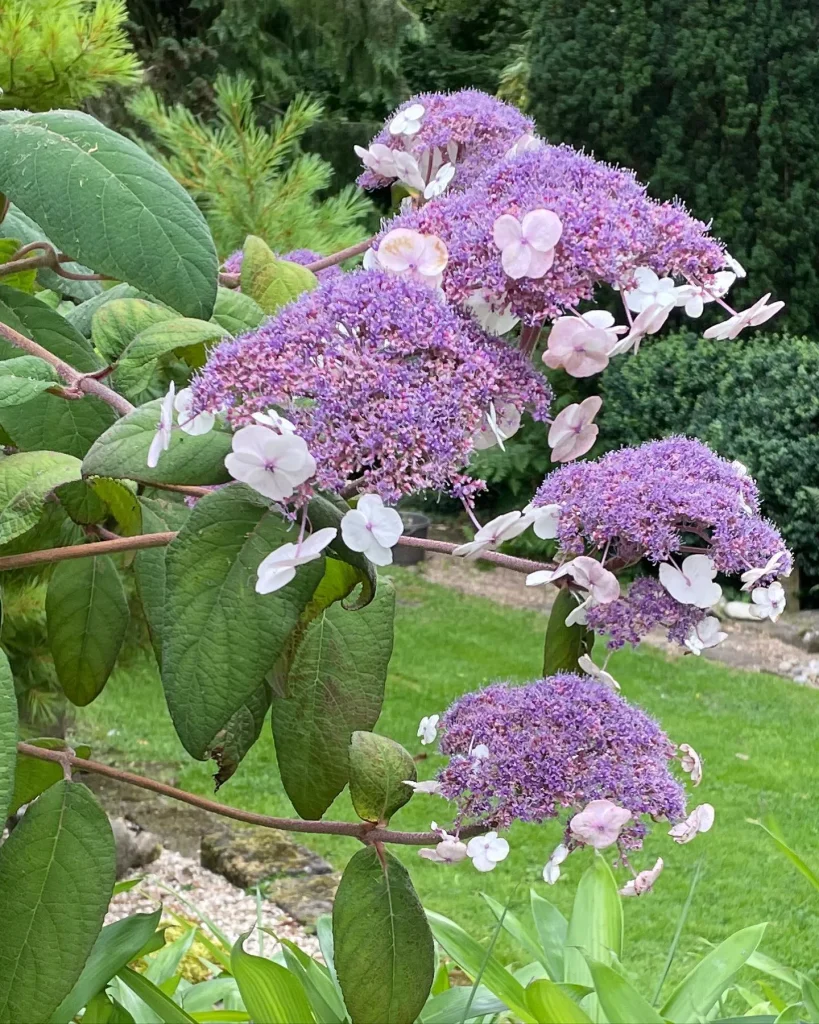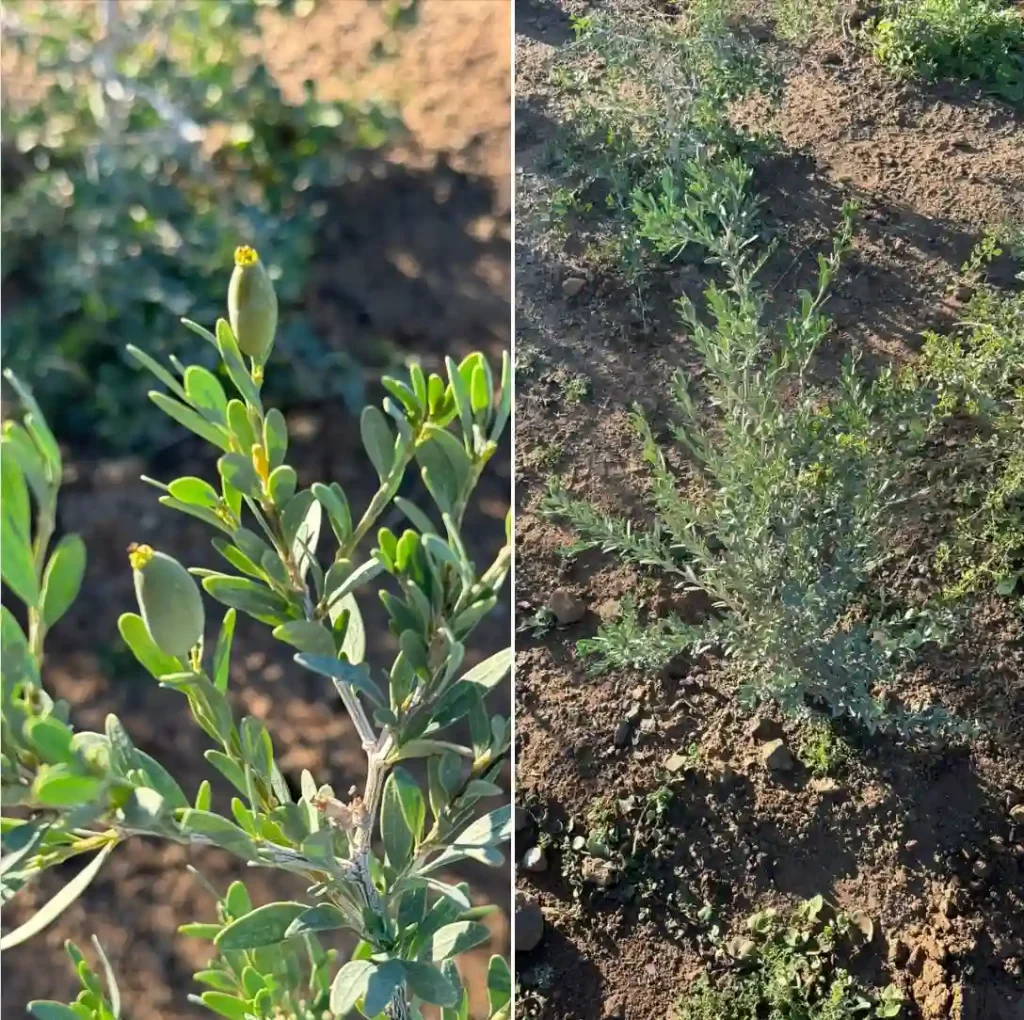
FAQs About Papaya Plant
Growing a papaya plant is a rewarding experience, especially if you enjoy tropical fruits. Whether you’re new to gardening or looking to expand your knowledge, here are some frequently asked questions about the papaya plant, covering everything from planting to comparison with other fruits.
3 Species in Genus Carica
How to Plant a Papaya Plant?
Planting a papaya plant is relatively straightforward. Start by choosing a sunny location with well-drained soil. Papayas thrive in warm climates, so they need plenty of sunlight—at least 6 to 8 hours a day.
- Start from Seeds: You can begin by planting seeds. Soak the seeds in water for 24 hours before planting. Prepare the soil by mixing in compost or well-rotted manure to improve fertility and drainage. Sow the seeds about 1 inch deep and 3 feet apart.
- Transplanting Seedlings: If you’re starting with seedlings, plant them in the same conditions as seeds, ensuring they are spaced adequately to allow for growth.
What Does a Papaya Plant Look Like?
Papaya plants are quite distinctive. They have a single, upright trunk and a crown of large, lobed leaves at the top. The leaves are broad and have a deep green color. Papaya plants can grow between 6 to 10 feet tall and sometimes even taller.
Their flowers are small and yellow, growing in clusters at the base of the leaves. The fruit develops from these flowers, maturing into the large, oval-shaped papayas we eat.
How to Identify Male and Female Papaya Plant?
Identifying male and female papaya plants is crucial because only the female plants produce fruit. Here’s how you can differentiate them:
- Male Papaya Plants: These produce small, tubular flowers that are clustered in long, thin stalks. They do not bear fruit but are necessary for pollination.
- Female Papaya Plants: Female flowers are larger, rounder, and grow directly from the plant’s base. They have a noticeable ovary, which eventually develops into the fruit.
- Hermaphrodite Papaya Plants: Some papayas have both male and female flowers on the same plant and can produce fruit on their own.
How Much Water Does a Papaya Plant Need?
Papaya plants need consistent moisture but don’t like to be waterlogged. Water them regularly, keeping the soil moist but not soggy. During hot weather, you might need to water more frequently. Drip irrigation works well to maintain the right moisture level without oversaturating the soil.
When Does a Papaya Plant Give Fruit?
Papaya plants typically start bearing fruit within 6 to 12 months of planting, depending on the variety and growing conditions. The fruit matures quickly, often within a few months from the time it appears on the plant.
Where to Buy a Papaya Plant?
You can buy papaya plants from various sources:
- Garden Centers: Many local garden centers and nurseries offer papaya plants.
- Online Nurseries: Websites specializing in tropical plants often have a range of papayas.
- Farmers’ Markets: Some farmers may sell papaya plants or seeds.
How to Grow a Papaya Plant in a Pot?
Growing papayas in pots is possible but requires some attention:
- Choose the Right Pot: Use a large, well-draining pot. Papayas have extensive root systems, so the pot needs to be at least 18 inches in diameter.
- Soil: Use a mix of potting soil and compost for good drainage and nutrition.
- Placement: Place the pot in a sunny spot. Papayas need plenty of light.
- Watering: Keep the soil consistently moist but avoid waterlogging.
Papaya vs Mango
Papayas and mangoes are both tropical fruits but differ in flavor and texture. Papayas are softer and sweeter with a more delicate flavor, while mangoes are firmer and have a tangy, rich taste.
Papaya vs Paw Paw
Paw paws are a different fruit, also known as the American pawpaw. They have a custard-like texture and a taste that blends banana, mango, and melon flavors. Papayas are tropical and have a more straightforward sweet taste.
Papaya vs Guava
Guavas are smaller and have a stronger flavor compared to papayas. They also contain edible seeds, whereas papayas have larger, inedible seeds.
Papaya vs Cantaloupe
Cantaloupes are melons with a sweet, orange flesh. Papayas are tropical fruits with a more pronounced flavor and are softer. Cantaloupes have a thicker rind, while papayas have a thinner skin.
Papaya vs Swedish Dishcloth
A Swedish dishcloth is a cleaning product, not a fruit, so comparing it to papaya doesn’t quite fit. Papayas are edible, while Swedish dishcloths are used for cleaning.
Papaya vs Apple
Apples are crisp and can range from sweet to tart. Papayas are softer, with a tropical sweetness and a custard-like texture.
Papaya vs Avocado
Avocados have a creamy texture and are rich in healthy fats, while papayas are sweeter and more watery, with a distinct tropical flavor.
Papaya vs Banana
Bananas are denser and have a more neutral sweetness. Papayas are softer and have a more exotic flavor.
Papaya vs Chayote
Chayote is a vegetable with a mild flavor and crisp texture, often used in savory dishes. Papayas are fruits with a sweet, tropical taste.
Papaya vs Dragon Fruit
Dragon fruit, or pitaya, is known for its vibrant color and unique look. It has a mildly sweet flavor and crunchy texture. Papayas are softer and sweeter with a more pronounced tropical taste.
Papaya vs Mamey
Mamey has a creamy texture and a flavor that combines pumpkin and almond. Papayas are softer and sweeter with a more tropical flavor.
Papaya vs Melon
Melons, like cantaloupe and honeydew, are sweet and juicy with a high water content. Papayas are similar in juiciness but offer a more tropical flavor.
Papaya vs Orange
Oranges are citrus fruits with a tangy flavor. Papayas are sweet with a smooth texture, contrasting the acidity of oranges.
Papaya vs Passion Fruit
Passion fruit is tart with a distinctive, strong flavor and crunchy seeds. Papayas are sweet and soft, with a more subtle taste.
Papaya vs Pineapple
Pineapples have a tart and tangy flavor with a fibrous texture. Papayas are sweeter and have a smoother texture.
Papaya vs Pomegranate
Pomegranates are known for their tart seeds and are eaten for their juicy arils. Papayas are softer and sweeter, with a smooth texture.
Papaya vs Watermelon
Watermelons are large and juicy with a refreshing taste. Papayas are smaller and have a more tropical sweetness.
Papaya vs Deel
Deel is a type of tropical fruit that’s not as commonly known as papayas. The comparison here is more niche, but papayas are widely recognized for their sweet flavor and soft texture.
How to Care for Papaya Plants?
To care for papaya plants, ensure they receive ample sunlight, water them regularly, and provide well-drained soil. Fertilize occasionally to promote healthy growth. Be mindful of pests and diseases that can affect papayas.
How to Propagate Papaya Plants?
You can propagate papayas from seeds. Start by soaking the seeds, then plant them in a warm, sunny location. Germination takes about 2 to 3 weeks.
What to Plant With Papaya?
Papayas grow well with other tropical plants like bananas and pineapples. They benefit from companion plants that provide shade or help with soil fertility.
Can You Grow Papaya Indoors?
Papayas are best grown outdoors due to their size and light requirements. However, with sufficient light and space, you can grow a dwarf variety indoors.
Is Papaya Toxic?
Papayas are not toxic and are safe to eat. They are nutritious and provide various health benefits, including aiding digestion and providing vitamins.
Benefits of Papaya
Papayas are rich in vitamins A and C, antioxidants, and digestive enzymes like papain. They support immune health, aid digestion, and have anti-inflammatory properties.
Common Problems with Papaya Plants
Common issues include pests like aphids and whiteflies, diseases such as papaya ringspot virus, and nutrient deficiencies. Regular monitoring and proper care can help manage these problems.
By addressing these frequently asked questions, I hope this guide helps you in growing and caring for your papaya plant. Whether you’re starting from seeds or comparing it with other fruits, papayas offer a unique and rewarding gardening experience.
If i die, water my plants!



